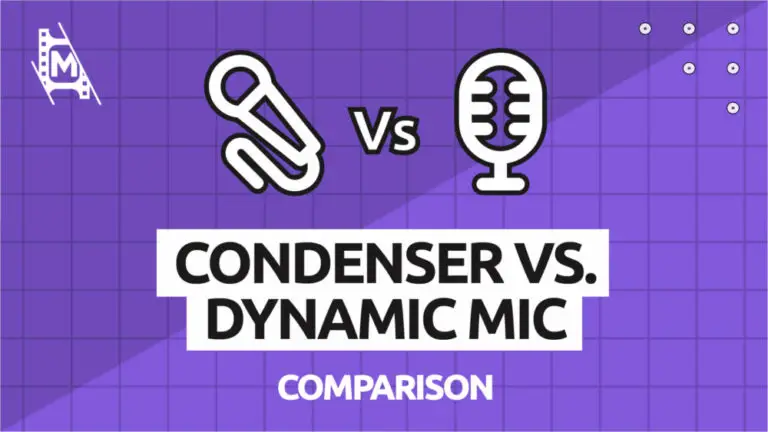You’ll be faced with a choice when recording audio for a podcast or other types of audio content. A choice that can seem deceptively simple on the surface and then get overwhelmingly tech-y really fast. You have to choose between a condenser vs. a dynamic microphone.
Both types of mics are widely used in studios and other audio recording environments, each with its own set of benefits that make them better for specific situations.
Should I Get a Dynamic or Condenser Microphone for Podcasting?
If you are here for a quick answer with not a lot of fuss, here it is:
So basically, a condenser mic is a more expensive option requiring an environment with little noise, ideally a sound-treated space. It will also be slightly trickier to set up this kind of mic.
A dynamic mic is cheaper and easier to set up. It is also much more ideal for noisier environments like your room. If you are starting out and don’t have a professional studio, we recommend you pick up a dynamic microphone for podcasting.
This answer might satisfy some, but we recommend you keep reading below as more factors are at play. We will closely examine condenser vs. dynamic microphones for podcasting and compare to show which one is the best for you.
What is a Condenser Microphone?
A condenser microphone generates sound using a capacitor—two close-together metal-covered plates that are part of the device. A voltage passes between the plates, and when the diaphragm is vibrated by a voice, it generates an electrical signal.
An amplifier receives the amplified signal and then passes an electrical signal through a speaker or other device, which the listener hears. A transformer eliminates other noises on the signal path so that the amplifier can amplify the signal.
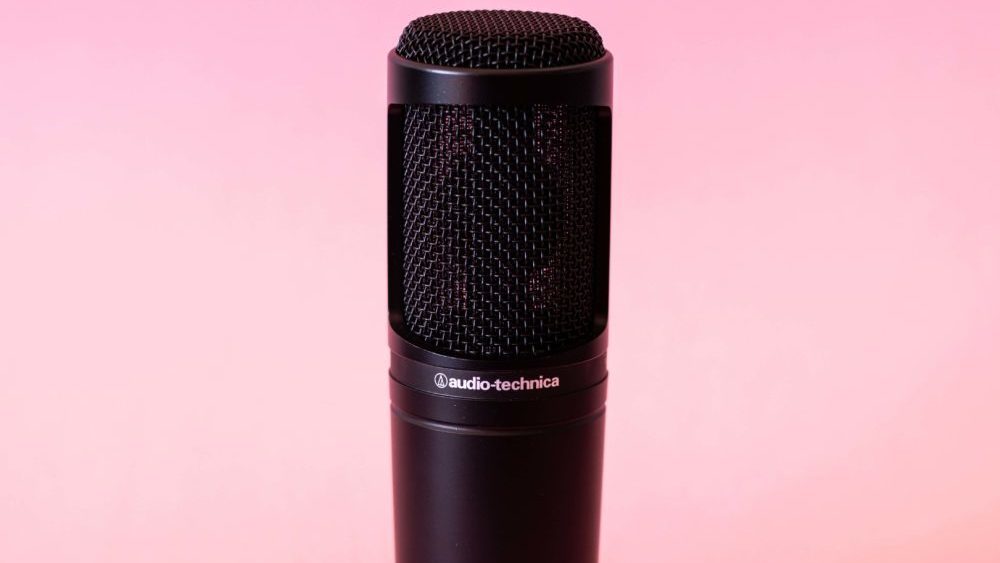
In Plain English
You have probably seen a condenser mic in a video podcast or the recording booth of singers and voice actors. It is a large microphone usually used with a round pop filter in front of it.
This type of microphone is highly sensitive, which allows it to pick up detailed natural sound, and because of this, it is often used to record vocals in professional recording studios.
Since the condenser microphone is an electro-mechanical device, it requires an additional power source, called phantom power.
Condenser mics have different polar patterns. They can pick up sound right in front of the speaker (cardioid), on two sides (bi-directional), or all around the mic (omnidirectional).
Images attribution to Galak76 / CC BY-SA (http://creativecommons.org/licenses/by-sa/3.0/)
Omnidirectional mics are best for recording ambient sound and will pick up everything, including any noise from your computer, traffic outside, or people talking. For these reasons, omnidirectional and bi-directional mics are not ideal for voice recording. Still, they can have a purpose in a podcasting setting if you are several hosts using only one mic. The omnidirectional will pick up everyone’s voices in the room and the room tone at large.
What is a Dynamic Microphone?
A dynamic microphone creates an electrical signal by using a magnetic field. An electrical current is created when a tiny metal coil suspended within the microphone moves because of air vibration, such as your voice. That current transmit the audio.
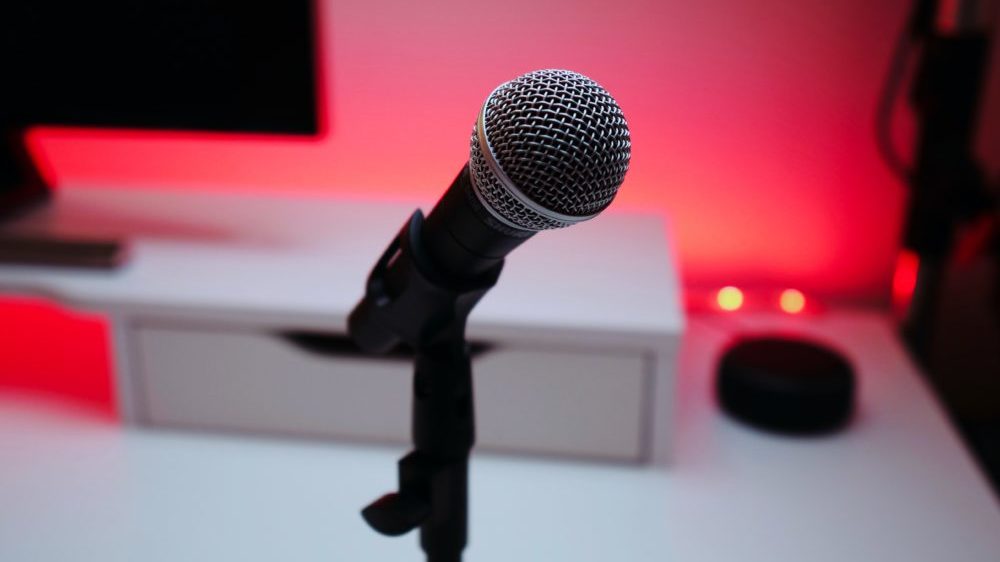
In Plain English
The dynamic microphone is often used on stage and is well suited for live performances, loud recording instruments, and public speaking, but it has its function in the podcast as well, as we’ll get into in just a moment.
It is sturdier, not as detailed in sound as the condenser, and has a narrower intake of sound, meaning that it only picks up sound right in front and close to it. They are also usually built with high resistance to moisture and voltage.
A dynamic microphone does not require an additional power source because it uses the energy of the sound waves to create the signal. They are often cheaper than condenser mics and better for those who don’t need the highest range of frequencies and details in recordings.
Is a Condenser or Dynamic Mic Better for Podcasts?
The best way to determine which mic is right for your podcast is to assess your specific needs and goals. Let’s look at a few of the main factors to consider when comparing the two mic types.
Your Recording Space
The room you record your podcast in will be crucial when deciding which podcast mic to get. If you don’t have a dedicated area to record in that is sound-treated, your recording will likely sound echoey, unprofessional, and not as crisp as your audience would like. (Also, if you’re running a fan—forget about it.)
This is where a dynamic mic might help since it only picks up sound in a narrow range, essentially filtering out the noise of your room. Condenser mics really want to be used in a booth, a sound-treated space, or even just a closet.
Budget
The cost of each microphone type can vary greatly. Condenser mics are typically more expensive than dynamic mics due to the complex design and power source use. Great professional condensers can cost many thousands of dollars. Having said that, there are alternatives for most wallets.
Due to the increasing popularity of recording in a home studio, you can find condenser microphones for much cheaper—we’re talking in the $100 range. Dynamic mics continue to be the cheaper option, though, between $20-$1000.
Setup
You should also take into account the setup required for each microphone type. Condenser microphones typically require additional hardware in the form of a powered mixer or audio interface that provides phantom power. Dynamic mics do not need phantom power, but you will still need a mixer or pre-amp for it.
If you are not as picky about sound quality as an audio engineer, you have the option of picking up a USB mic. The upside of the USB alternative is that all you have to do is plug and play. They do not offer the same sound quality (there’s a reason pro studios don’t use USB mics), but most ears can’t tell the difference between a mediocre condenser and an excellent USB mic. Especially beginners.
Condenser Mic for Podcasting Pros and Cons
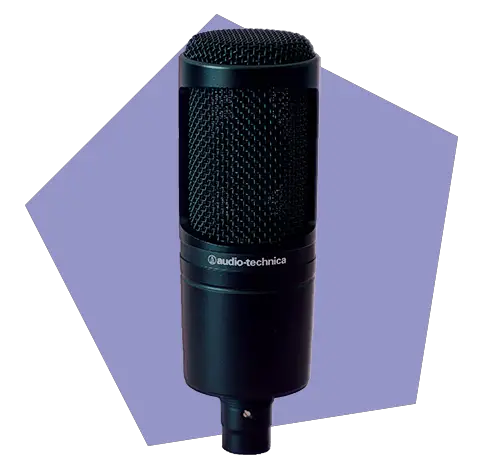
If you are looking for a versatile microphone that is high-quality and able to pick up rich and natural sound, and if you have a budget for it, a condenser mic might be the best option for you.
Dynamic Mic for Podcasting Pros and Cons
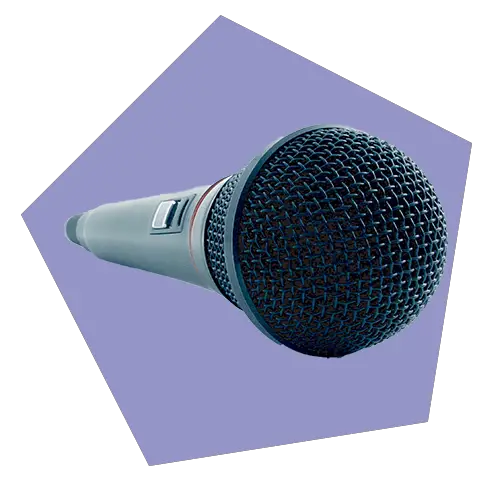
On the other hand, a dynamic mic might be the better choice if you are looking for a podcasting microphone that is easy to set up, sturdy, and fits a noisy environment.
Pros
Cons
A Note on Mic Stands for Podcasting
There are different stands for the condenser mic and the dynamic mic. You will want to ensure that you have a stand suitable for podcasting, sturdy enough for the mic, and will not tip over easily.
If your mic stand keeps sagging under the weight of the mic, you will have to reposition and try to secure the stand constantly while recording, which adds noise, and is just plain annoying.
You’ll want a stand that won’t add any sound to your recording even if you don’t touch it.
Some desk stands—often tripods with three feet that you put directly on the table—might pick up the noise that travels through the table when you put something on it. It will become a rumbling sound in your recording, which is probably not what you are going for.
Other stands, like the boom arm, are fixed to the table but have a shock mount. This sets the microphone securely in a mount that eats up bumbling sounds that might get into the table and stand.
If you have a portable studio, you will also want to ensure that you have a stand that is easy to set up and take down and that you can put the mic exactly where you need it.
This is an affordable mic arm we recommend from Amazon. Notice the shock mount that absorbs any kind of sound from the arm or table.
A slightly less flexible, but cheaper option would be a tabletop stand with a shock mount like this one.
In Conclusion: Condenser vs. Dynamic Microphone for Podcasting
We’ve compared the differences between the condenser vs. dynamic microphone for podcasting and the pros and cons of each. Now it’s time to decide which microphone is better for your podcast.
If you are starting a podcast, you probably don’t have the budget yet for a sound-treated space or a lot of additional hardware. In that case, we recommend you go with a dynamic mic and spend that extra time editing to make your audio sound great.
On the other hand, if you are ready to invest in an external power source and create a sound-treated space or studio, it makes more sense to go with a condenser mic.
The condenser vs. dynamic microphone debate really boils down to personal choice and your specific preferences.
